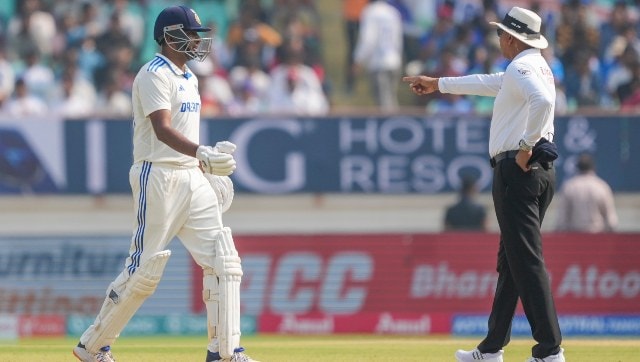England started their first innings in Rajkot Test at 5 for 0 after India were given a penalty on Day 2 of the third Test. India received the penalty after Ravichandran Ashwin ran on the protected area of the pitch during India’s innings. The umpires had already given the first and final warning to Ravindra Jadeja on Day 1.
IND vs ENG 3rd Test: Day 2 LIVE Scores
Former England captain Alastair Cook has now claimed that it was a deliberate attempt by Ashwin to run on the protected area.
Related Articles
 India vs England 2nd Test match Highlights: Yashasvi Jaiswal’s unbeaten century powers India to 336/6 at stumps on Day 1
India vs England 2nd Test match Highlights: Yashasvi Jaiswal’s unbeaten century powers India to 336/6 at stumps on Day 1“Is it deliberate? Yes, it is. It’s a tactical ploy that you can disturb the middle of the wicket because Ashwin wants as much help (as possible) when he can bowl,” Cook said on TNT Sports.
“Normally, it happens in the third innings. You’re 150-200 runs ahead and you think, ‘just make sure you get up and down the wicket’… that was gamesmanship there, wasn’t it?”
As per MCC law, the protected area is “that area of the pitch contained within a rectangle bounded at each end by imaginary lines parallel to the popping creases and 5 ft/1.52 m in front of each, and on the sides by imaginary lines, one each side of the imaginary line joining the centres of the two middle stumps, each parallel to it and 1 ft/30.48 cm from it”.
Ashwin was eventually dismissed by Rehan Ahmed as India’s innings came to an end on 445. England have made a strong start to their innings.
Coming to the incident. Law 41.14, which comes under unfair play section, states: “It is unfair to cause deliberate or avoidable damage to the pitch. If the striker enters the protected area in playing or playing at the ball, he/she must move from it immediately thereafter. A batter will be deemed to be causing avoidable damage if either umpire considers that his/her presence on the pitch is without reasonable cause.
“If either batter causes deliberate or avoidable damage to the pitch, other than as in 41.15, at the first instance the umpire seeing the contravention shall, when the ball is dead, inform the other umpire of the occurrence. The bowler’s end umpire shall then warn both batters that the practice is unfair and indicate that this is a first and final warning. This warning shall apply throughout the innings. The umpire shall so inform each incoming batter, inform the captain of the fielding side and, as soon as practicable, the captain of the batting side of what has occurred.
“If there is any further instance of deliberate or avoidable damage to the pitch by any batter in that innings, the umpire seeing the contravention shall, when the ball is dead, inform the other umpire of the occurrence.
“The bowler’s end umpire shall disallow all runs to the batting side, return any not out batter to his/her original end, signal no-ball or wide to the scorers if applicable, and award 5 penalty runs to the fielding side.”





